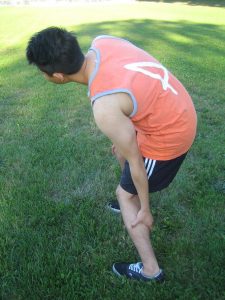A torn calf muscle is considered as a common injury. The two muscles that work together to form the lower leg or the calf include the deeper soleus muscle and the gastrocnemius muscles. These muscles attach the heel to the back of the knee and responsible for plantar flexing the ankle and extension of the knee while running, walking, jumping and kicking. A calf strain injury happens in the middle leg or knee within the muscle belly.
Muscles strains can be classified into grade 1 which involves tearing of a few muscle fibers. A grade 2 tear involves a moderately damaged muscle fiber while grade 3 involves the complete rupture of the muscles.
Most calf strains self heal within a week. The grade 1 muscle strains have micro tears of 10% of the muscle fibers. The injury is characterized with mild twinges or sudden and sharp pain felt at the back of the lower leg close to the knee. The affected person can still run, walk or play his/her sport, even if there is discomfort and tightness of the affected area.

Grade 2 muscle strains can cause more damage in which up to 90% of the fibers are torn. The injuries cause severe pain, decrease in the muscle strength and loss of range of motion. There is severe swelling of the affected area and rapid development of bruising due to internal bleeding caused by a tear in the muscle fibers. With grade 2 muscle strains, the ability to perform activities becomes limited. A grade 3 muscle strains requires immediate medical care.
Treatment for a torn calf muscle
- Take plenty of rest and avoid performing any activity.
- Apply a cold compress by wrap ice cubes in a thin cloth or towel. Apply immediately on the affected area after the injury to prevent any internal bleeding and lessen the inflammation. If ice is not available, a frozen gel pack can be used. Apply the cold compress on the affected area at least 10-15 minutes every hour.
- Elevate the affected legs on a chair or stack of pillows above the level of the heart to prevent inflammation.
- For a grade 2 strain, apply the ice pack on the torn calf muscle for at least 20 minutes at a time. Avoid giving anti-inflammatory medication in the first 24-72 hours to prevent the risk of bleeding.
- Wrap a compression bandage on the affected area and leave it on for at least 15 minutes at a time. Avoid wrapping it too tight to prevent the normal flow of blood.
- Take over-the-counter pain and anti-inflammatory medications such as ibuprofen, naproxen and aspirin to lessen the pain and inflammation from a torn calf muscle.
- Seek the help of a physical therapist for some strengthening and stretching exercises.
